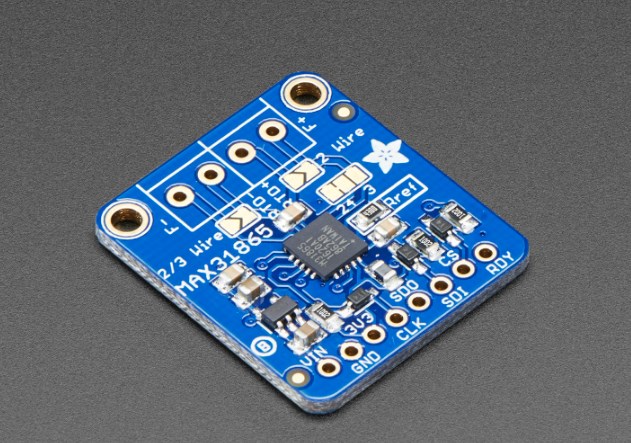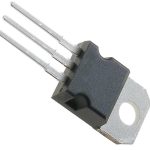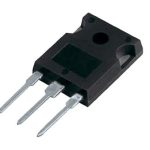The MAX31865 RTD-to-Digital Converter is a highly capable integrated circuit that enables precise temperature measurements using Resistance Temperature Detectors (RTDs). With its advanced features and accurate data conversion, the MAX31865 offers a comprehensive solution for temperature sensing applications. In this blog, we will introduce MAX31865 in detail and you can read to learn more.
MAX31865
Description
The MAX31865 is a highly integrated resistance-to-digital converter (RTD) that is specifically designed for precision temperature measurement applications. It provides an accurate and easy-to-use solution for measuring temperature using RTDs, which are commonly used in industrial and scientific applications.
The MAX31865 supports 2-, 3-, and 4-wire RTDs, including platinum RTDs (PT100, PT500, PT1000). It converts the resistance of the RTD into a digital value that can be read by a microcontroller or other digital interface. The device includes an on-chip temperature sensor for cold-junction compensation, which ensures accurate temperature measurements even in varying environmental conditions.
Features and Benefits
The MAX31865 offers several features and benefits that make it an excellent choice for temperature measurement applications:
- High Accuracy: The device provides high accuracy temperature measurements with ±0.5°C maximum error over the entire temperature range (-200°C to +850°C). This level of accuracy is crucial for demanding applications where precise temperature control is required.
- Integrated Cold-Junction Compensation: The on-chip temperature sensor compensates for the temperature at the RTD connection point, known as the cold junction. This compensation ensures accurate temperature measurements by eliminating errors caused by temperature variations at the connection point.
- Flexible RTD Support: The MAX31865 supports various types of RTDs, including 2-, 3-, and 4-wire configurations, as well as different resistance values such as PT100, PT500, and PT1000. This flexibility allows for compatibility with a wide range of RTDs commonly used in different industries.
- Low Noise and Drift: The device incorporates low-noise signal conditioning circuitry, minimizing the impact of noise sources on temperature measurements. Additionally, it has low drift, ensuring long-term stability and reliability in temperature monitoring applications.
- Digital Interface: The MAX31865 communicates with external devices through a standard SPI (Serial Peripheral Interface) or 3-wire interface, making it easy to integrate into existing microcontroller-based systems. The digital interface provides fast and reliable data transfer, enabling real-time temperature monitoring and control.
Applications
The MAX31865 finds application in various fields where accurate temperature measurement is critical. Some notable applications include:
- Industrial Control Systems
The device is commonly used in industrial control systems that require precise temperature monitoring and regulation. It can be integrated into equipment such as furnaces, ovens, and environmental chambers to ensure optimal temperature control and process stability.
- Medical Devices
In medical applications, the MAX31865 can be utilized for temperature sensing in devices like incubators, blood analyzers, and laboratory equipment. Its high accuracy and compatibility with different RTDs make it suitable for medical environments where temperature control is vital.
- Aerospace and Automotive
The MAX31865’s high accuracy and robust performance make it suitable for aerospace and automotive applications. It can be employed in engine monitoring systems, climate control systems, and other temperature-sensitive components to ensure reliable and efficient operation.
- Energy Management
The device can be used in energy management systems to monitor temperature in power generation plants, renewable energy systems, and smart grids. Accurate temperature measurements help optimize energy efficiency and prevent equipment damage.
- Scientific Research
The MAX31865 is also useful in scientific research applications, such as materials testing, thermal analysis, and environmental monitoring. Its high accuracy and compatibility with various RTDs enable precise temperature measurements in research laboratories and experimental setups.
MAX31865 Pinout

MAX31865 CAD Model


Datasheet
You can click here to get the MAX31865 datasheet so that you can learn more useful information about this converter.

FAQs
What is the temperature range of MAX31865?
The temperature range of the MAX31865 depends on the RTD sensor connected to it. Typically, the MAX31865 supports a wide range of temperatures from -200°C to +850°C. However, it’s important to note that the actual temperature range will be determined by the capabilities and limitations of the RTD sensor used in conjunction with the MAX31865.
What is the maximum temperature for a PT100 sensor?
The maximum temperature for a PT100 sensor, which is a type of RTD (Resistor Temperature Detector), is typically around 600°C. Beyond this temperature, the accuracy and reliability of the PT100 sensor may decline. It’s essential to select an appropriate RTD sensor based on the desired temperature range of your application and the specifications provided by the manufacturer.
What is the voltage of MAX31865 input?
The MAX31865 RTD-to-Digital Converter has an input voltage range of 2.7V to 3.6V. It is designed to operate within this voltage range to ensure accurate and reliable temperature measurements. It’s crucial to provide a stable and appropriate voltage to the MAX31865 for optimal performance.
What is the temperature sensor on the Arduino PT100?
The Arduino PT100, often used in combination with the MAX31865, is a temperature sensor that utilizes a PT100 RTD element. It measures temperature based on the resistance change of the PT100 element as the temperature varies. The Arduino PT100 module typically includes an amplifier circuit to amplify the small signal from the PT100 sensor before passing it to the MAX31865 or other similar temperature measurement devices.
Does PT1000 need an amplifier?
In most cases, PT1000 sensors do not require an additional amplifier when used with the MAX31865 or similar RTD-to-Digital Converters. PT1000 sensors have a higher resistance compared to PT100 sensors, which results in a larger signal output.
The MAX31865 can handle this increased signal range without the need for an extra amplifier circuit. However, it’s important to refer to the specifications of your specific PT1000 sensor and the RTD-to-Digital Converter being used to ensure compatibility and optimal performance.
Conclusion
The MAX31865 RTD-to-Digital Converter simplifies and enhances temperature measurement tasks with its exceptional accuracy and robust functionality. Whether used in any, the MAX31865 provides reliable and precise temperature readings. By understanding its temperature range, compatibility with different sensor types, and optimal usage conditions, you can make the most of the MAX31865’s capabilities and integrate it seamlessly into your temperature sensing applications.



